Art and China’s Revolution
Location: Asia Society Museum, New York
Duration: Sep. – Dec. , 2008

Art and China’s Revolution
Long March Project Proposal
In keeping with the revolutionary themes and spirit of ‘Art and China’s Revolution’, which are based on ideas and sayings from the period 1950 to 1970, we propose the display of the following material to capture the aims and metaphorical motivations of the Long March Project. Specifically, this would include:
- 90 page curatorial outline by Lu Jie (text and images), which gave birth to the idea of the Long March Project in 1999. Lu Jie later took this document on the physical re-tracing of Mao Zedong’s historical Long March in 2002. (original document to be displayed along one wall)
- Textual map detailing selected chronology of Long March Project engagement with contemporary Chinese art and visual culture on a local and international platform, 2002-present. (opposite wall and printed in vinyl or carded)
- Key slogans of the Long March Project, including critical quotes by leading international scholars on the phenomenon of LMP activities and its unique approach to historical narrative, revolution and memory. Long March Project logo (by Xu Bing) plus 4 documentary video works: ‘LMP – Walking Visual Display; ‘Village cameraman and his son’ by Shen Shaomin; ‘The miniature Long March’ by Qin Ga; and ‘Long March Project – Yan’an’. (wall opposite entry to room)
- Wang Jinsong ‘The Long March Manifesto’ 2002 (Sound piece: see attached translation to be provided as wall text – this work would be placed to the right of the door as you walk in.)
- Collage of documentary photographs from ‘The Long March Project – A Walking Visual Display’ printed as vinyl, and placed either on the floor or ceiling.
Examples of slogans:
‘The Long March is a context and vision…an act of discovery and transplantation, and a re-distribution of resource. All events within and beyond art have found their way into the Long March, de-coded and then re-encoded to ultimately self-construct a difficulty to categorize a ‘Long March Event’. In actuality, the Long March has already become a gigantic machine of cultural production and self-effacement. In this machine’s realm of production and consumption, the majority of the Long March’s products possesses two sites of creativity, but do not have a real author.’ (Gao Shiming)
‘The Long March is actually a type of immaterial capital.’ (Wang Jianwei)
‘The Long March Project exudes the spirit of life exploration and seeks to study, understand and inherit the language of the masses.’ (Li Gongming, Dean and Professor of Art History, Guangzhou Academy of Fine Arts – YISHU)
‘The Long March looks to overcome the traditional distance between viewer and creator, to close the gap between ‘host’ and ‘guest’, and to seek a new understanding of space. In this way, The Long March will merge exhibition with creation, and allow consumption and production to interact.’ (Lu Jie and Qiu Zhijie ‘A Walking Visual Display’ 1998-2002)
‘…retracing is not only about touching base with actual spots on the original route but also about its various ‘ideological appropriations and re-routings’. At any particular site en route, project participants join in with the local’s daily activities…The encounter becomes a collective knowledge production and performance, with the potential for sifting through history, personal lives, vagaries of political regimes, issues of human rights, armed struggle, censorship….Everyone becomes a participant-observer analyzing both their immediate situation and the heroic march that symbolized an approach to modernization and development which had now lost its appeal.’ (Sarat Maharaj)
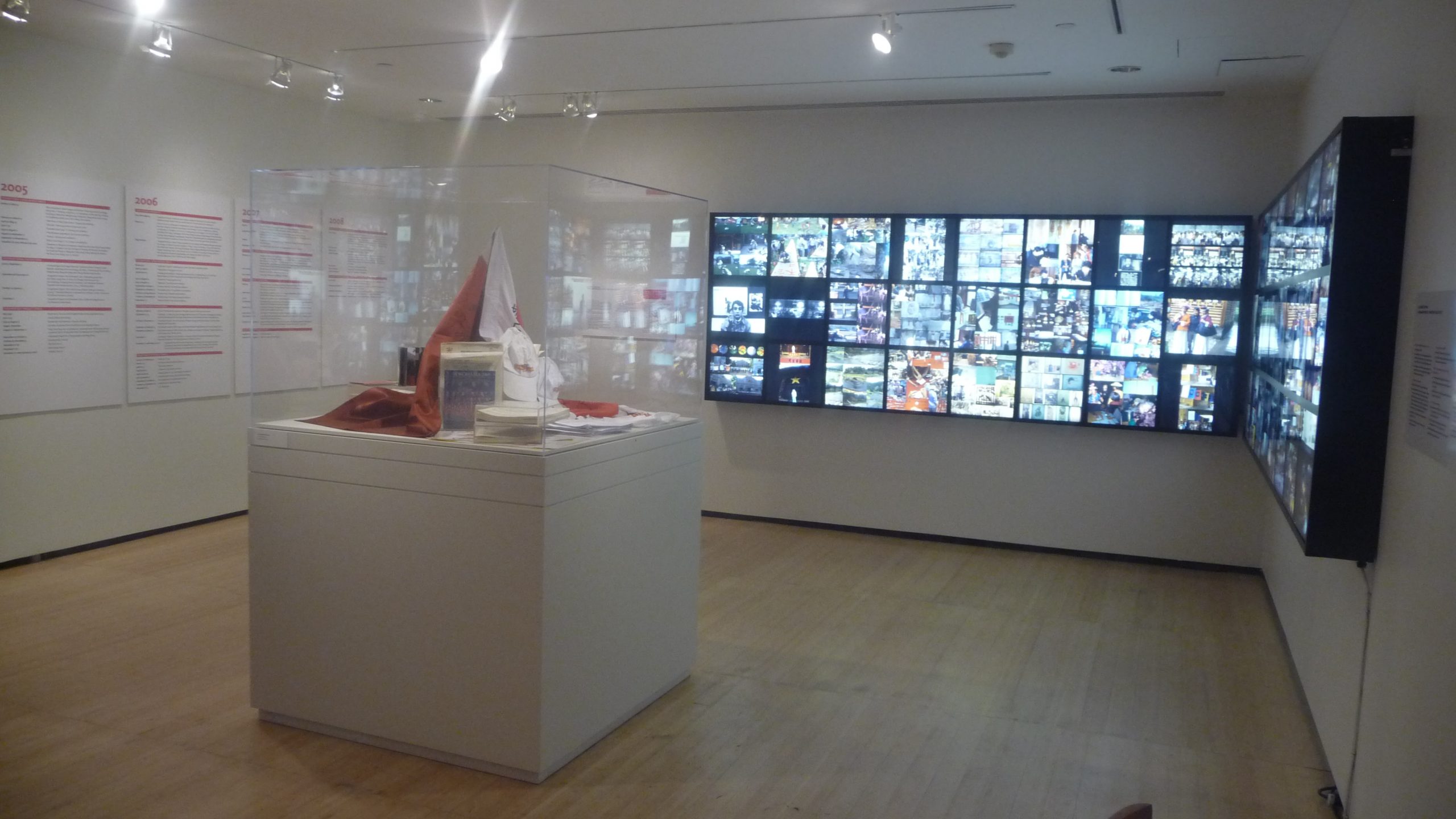
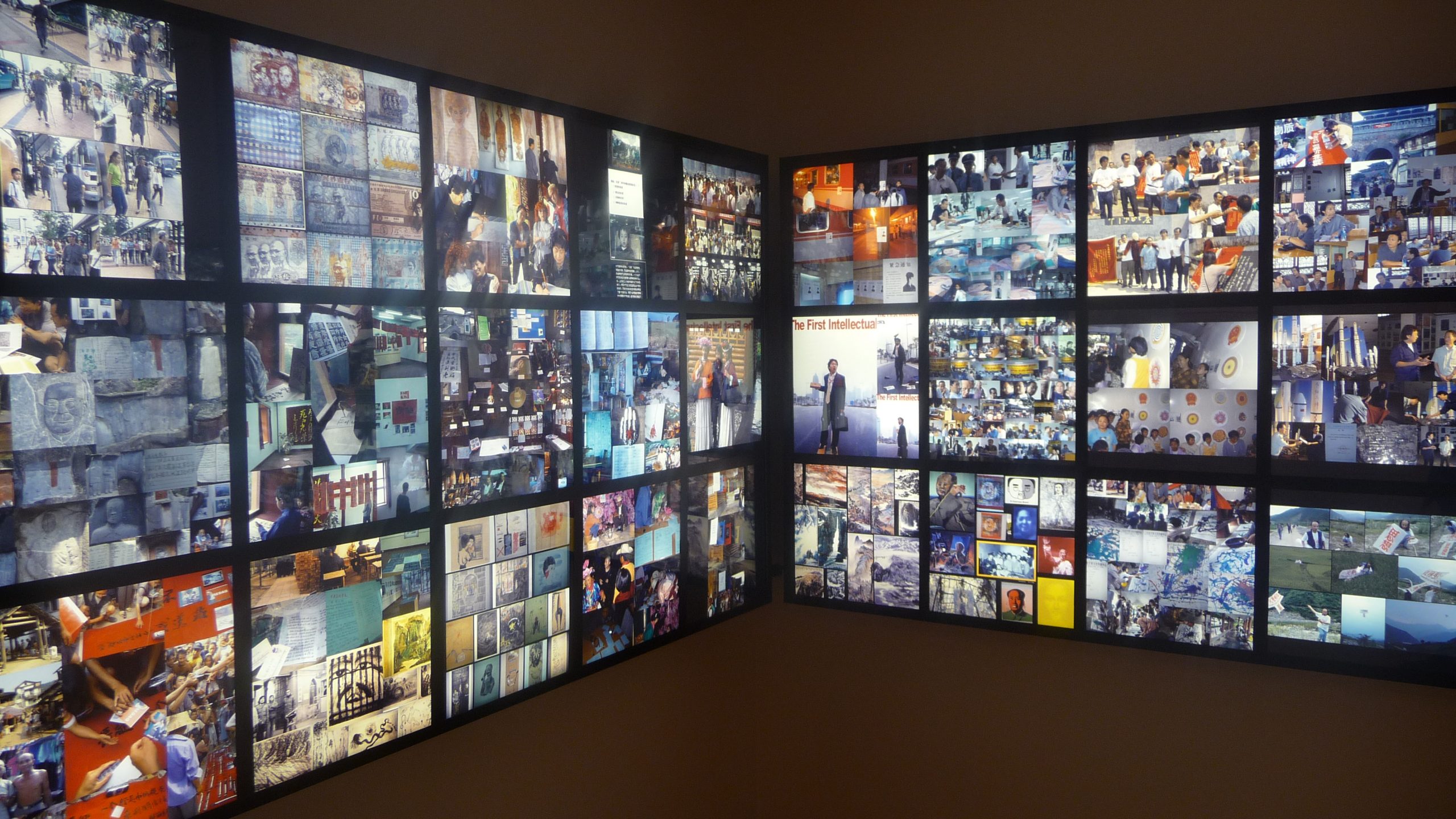
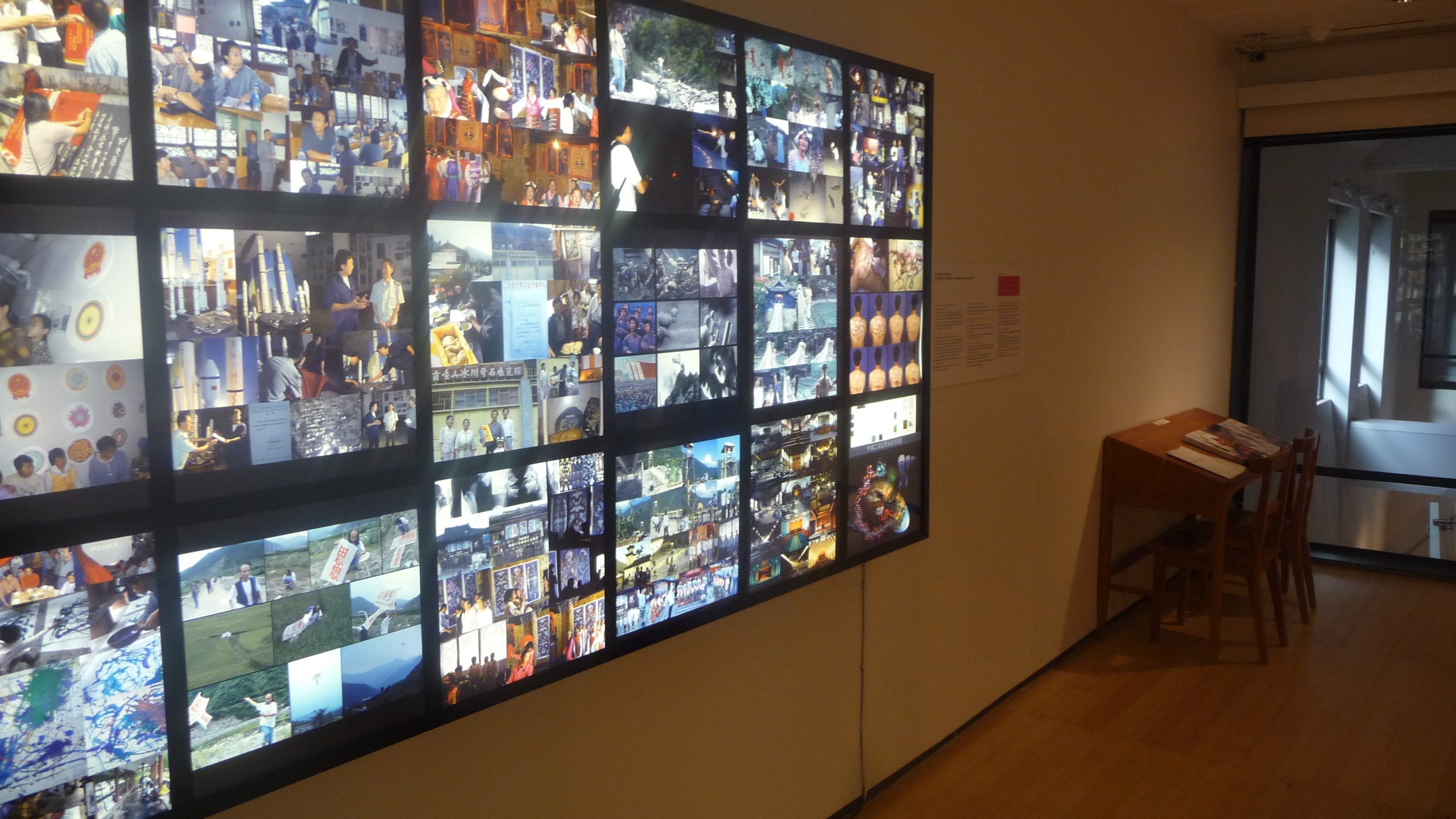
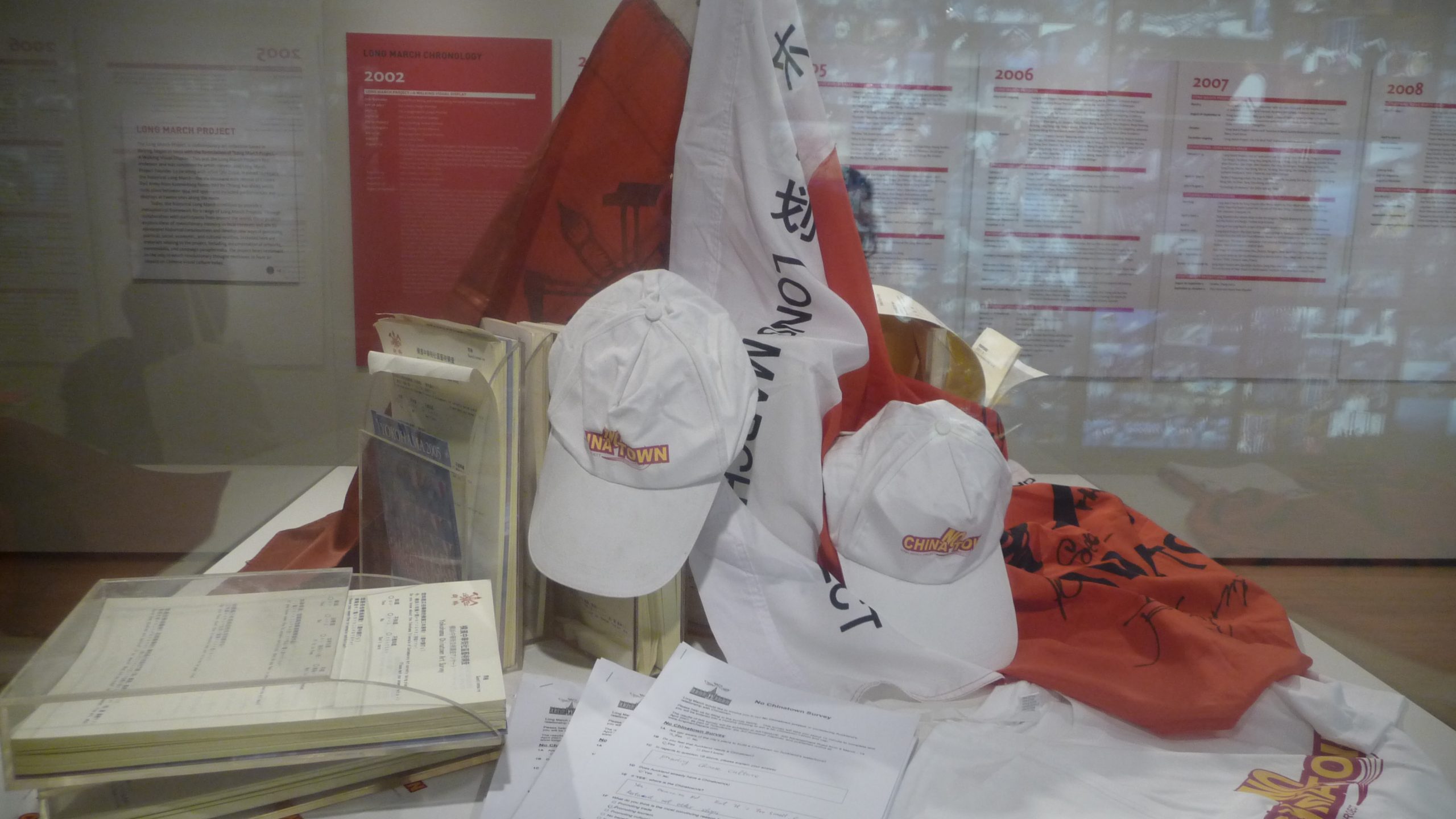
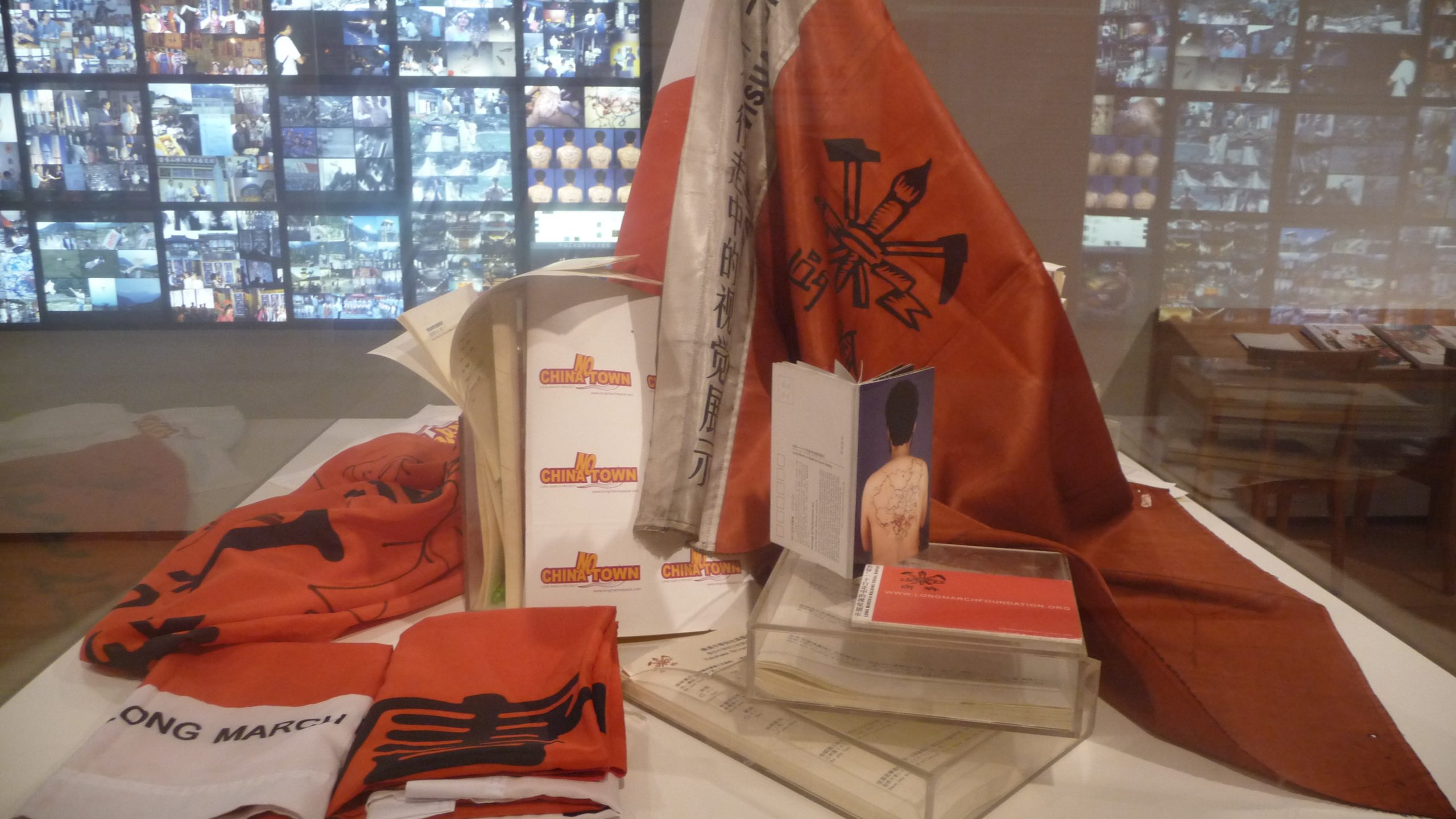
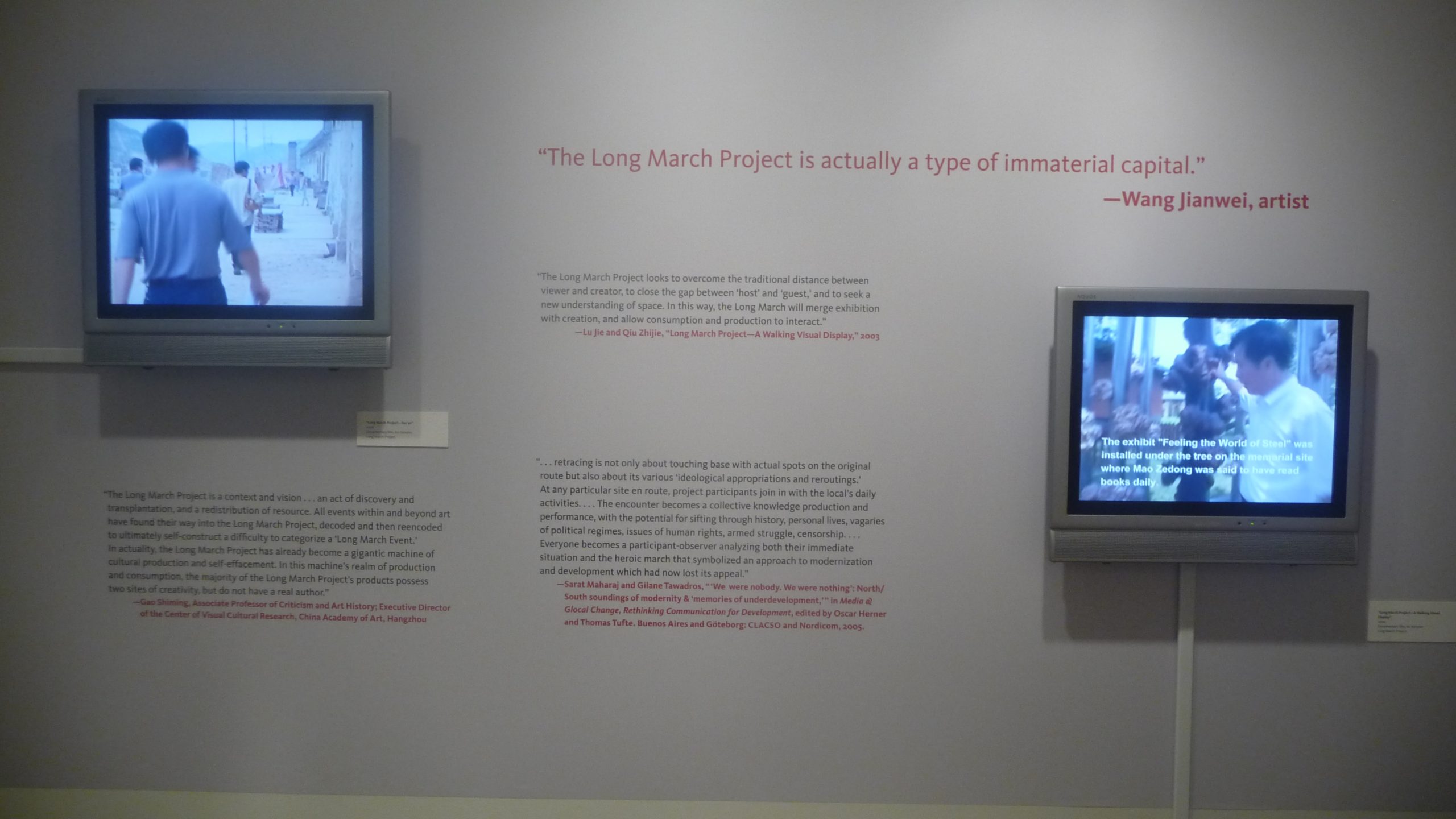

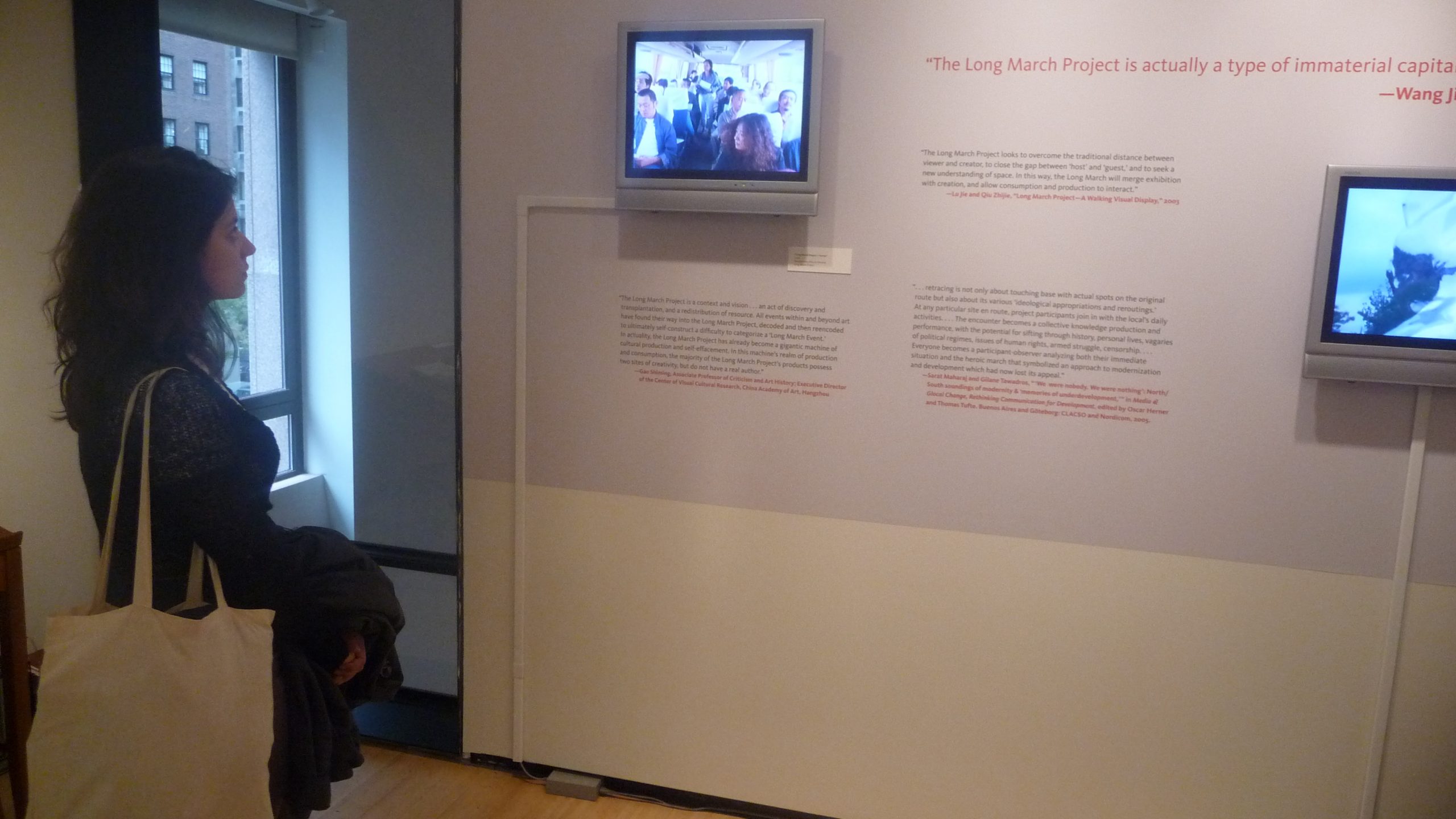
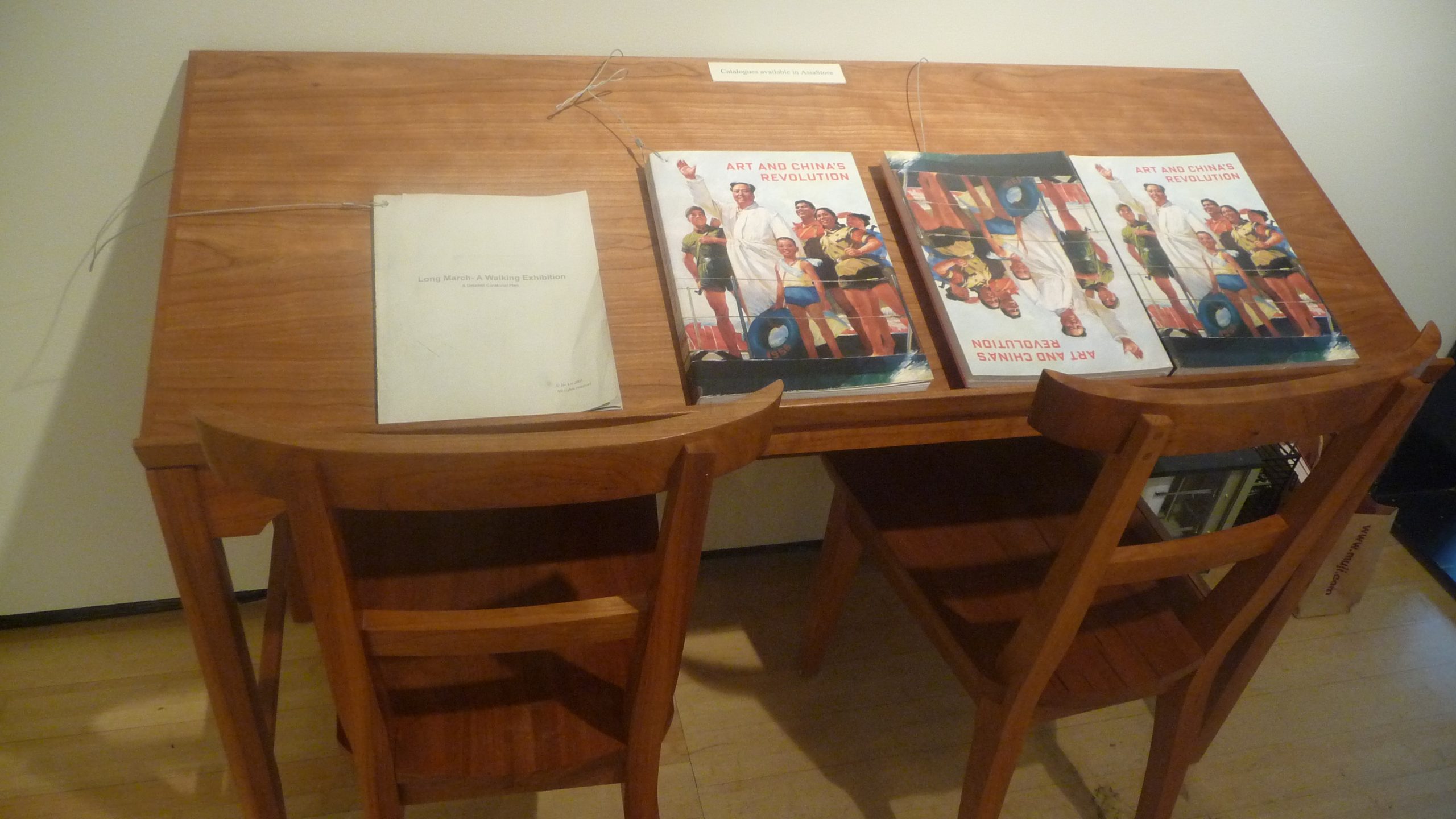
Art and China’s Revolution
Long March Project Proposal
In keeping with the revolutionary themes and spirit of ‘Art and China’s Revolution’, which are based on ideas and sayings from the period 1950 to 1970, we propose the display of the following material to capture the aims and metaphorical motivations of the Long March Project. Specifically, this would include:
- 90 page curatorial outline by Lu Jie (text and images), which gave birth to the idea of the Long March Project in 1999. Lu Jie later took this document on the physical re-tracing of Mao Zedong’s historical Long March in 2002. (original document to be displayed along one wall)
- Textual map detailing selected chronology of Long March Project engagement with contemporary Chinese art and visual culture on a local and international platform, 2002-present. (opposite wall and printed in vinyl or carded)
- Key slogans of the Long March Project, including critical quotes by leading international scholars on the phenomenon of LMP activities and its unique approach to historical narrative, revolution and memory. Long March Project logo (by Xu Bing) plus 4 documentary video works: ‘LMP – Walking Visual Display; ‘Village cameraman and his son’ by Shen Shaomin; ‘The miniature Long March’ by Qin Ga; and ‘Long March Project – Yan’an’. (wall opposite entry to room)
- Wang Jinsong ‘The Long March Manifesto’ 2002 (Sound piece: see attached translation to be provided as wall text – this work would be placed to the right of the door as you walk in.)
- Collage of documentary photographs from ‘The Long March Project – A Walking Visual Display’ printed as vinyl, and placed either on the floor or ceiling.
Examples of slogans:
‘The Long March is a context and vision…an act of discovery and transplantation, and a re-distribution of resource. All events within and beyond art have found their way into the Long March, de-coded and then re-encoded to ultimately self-construct a difficulty to categorize a ‘Long March Event’. In actuality, the Long March has already become a gigantic machine of cultural production and self-effacement. In this machine’s realm of production and consumption, the majority of the Long March’s products possesses two sites of creativity, but do not have a real author.’ (Gao Shiming)
‘The Long March is actually a type of immaterial capital.’ (Wang Jianwei)
‘The Long March Project exudes the spirit of life exploration and seeks to study, understand and inherit the language of the masses.’ (Li Gongming, Dean and Professor of Art History, Guangzhou Academy of Fine Arts – YISHU)
‘The Long March looks to overcome the traditional distance between viewer and creator, to close the gap between ‘host’ and ‘guest’, and to seek a new understanding of space. In this way, The Long March will merge exhibition with creation, and allow consumption and production to interact.’ (Lu Jie and Qiu Zhijie ‘A Walking Visual Display’ 1998-2002)
‘…retracing is not only about touching base with actual spots on the original route but also about its various ‘ideological appropriations and re-routings’. At any particular site en route, project participants join in with the local’s daily activities…The encounter becomes a collective knowledge production and performance, with the potential for sifting through history, personal lives, vagaries of political regimes, issues of human rights, armed struggle, censorship….Everyone becomes a participant-observer analyzing both their immediate situation and the heroic march that symbolized an approach to modernization and development which had now lost its appeal.’ (Sarat Maharaj)










